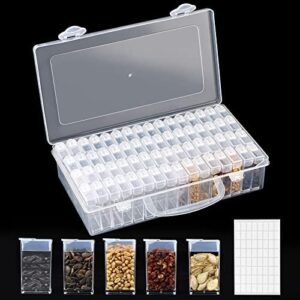Gardening is a delightful pastime that allows us to connect with nature and create a beautiful oasis right in our own backyard. Whether you’re a seasoned green thumb or just starting out, the key to a successful garden is knowing what plants to grow and when to plant them. That’s where a seasonal planting guide comes in handy.
When it comes to gardening, timing is everything. Different plants thrive in different seasons, so it’s important to know when to sow your seeds or transplant your seedlings. A seasonal planting guide can help you plan out your garden throughout the year, ensuring that you have a constant supply of fresh produce and vibrant blooms.
In the spring, as the weather starts to warm up, it’s time to get your garden in gear. This is the perfect time to plant cool-weather crops like lettuce, spinach, peas, and radishes. These vegetables prefer the cooler temperatures of spring and will bolt or go to seed quickly if planted in the heat of summer. You can also start sowing seeds for warm-weather crops like tomatoes, peppers, and cucumbers indoors or in a greenhouse to get a head start on the growing season.
As summer rolls around, it’s time to focus on tending to your garden and enjoying the fruits of your labor. Make sure to water regularly, mulch around your plants to retain moisture, and keep an eye out for pests and diseases. In the heat of summer, it’s best to plant heat-loving crops like tomatoes, peppers, eggplant, and squash. These plants thrive in the long, sunny days of summer and will produce a bountiful harvest if well cared for.
As the days start to get shorter and the temperatures begin to cool down, it’s time to start thinking about fall planting. Fall is a great time to grow cool-weather crops like broccoli, cabbage, carrots, and kale. These vegetables actually prefer the cooler temperatures of fall and will produce sweeter, more tender crops than if grown during the heat of summer. You can also plant bulbs like daffodils, tulips, and hyacinths in the fall for a burst of color in the spring.
Winter may seem like a quiet time in the garden, but there are still things you can do to prepare for the coming spring. Winter is a great time to plan out your garden layout, order seeds, and clean and sharpen your gardening tools. You can also start seeds indoors for early spring planting, like tomatoes and peppers. If you have a greenhouse, you can continue growing crops like lettuce, spinach, and herbs throughout the winter months.
Another important aspect of a seasonal planting guide is knowing when to fertilize and amend your soil. Different plants have different nutrient requirements, so it’s important to feed your plants at the right time to ensure healthy growth. In the spring, you can add compost or organic fertilizer to your soil to replenish nutrients after the winter months. During the growing season, you can use a balanced fertilizer to feed your plants as they grow. In the fall, you can topdress your garden with compost or mulch to improve soil structure and add organic matter for the next growing season.
In addition to knowing when to plant and fertilize, a seasonal planting guide can also help you plan out your garden layout. Some plants, like tomatoes and peppers, need plenty of sunlight and space to grow, while others, like lettuce and spinach, can be grown in smaller spaces or even in containers. By mapping out your garden and rotating crops each season, you can maximize your harvest and prevent soil-borne diseases from building up in your garden.
Overall, a seasonal planting guide is an essential tool for any gardener looking to grow a successful garden. By knowing when to plant, fertilize, and harvest your crops, you can ensure a bountiful harvest and a beautiful garden year-round. So grab your gardening gloves, a cup of coffee, and your favorite seed catalog, and start planning out your garden with a seasonal planting guide today. Happy gardening!






